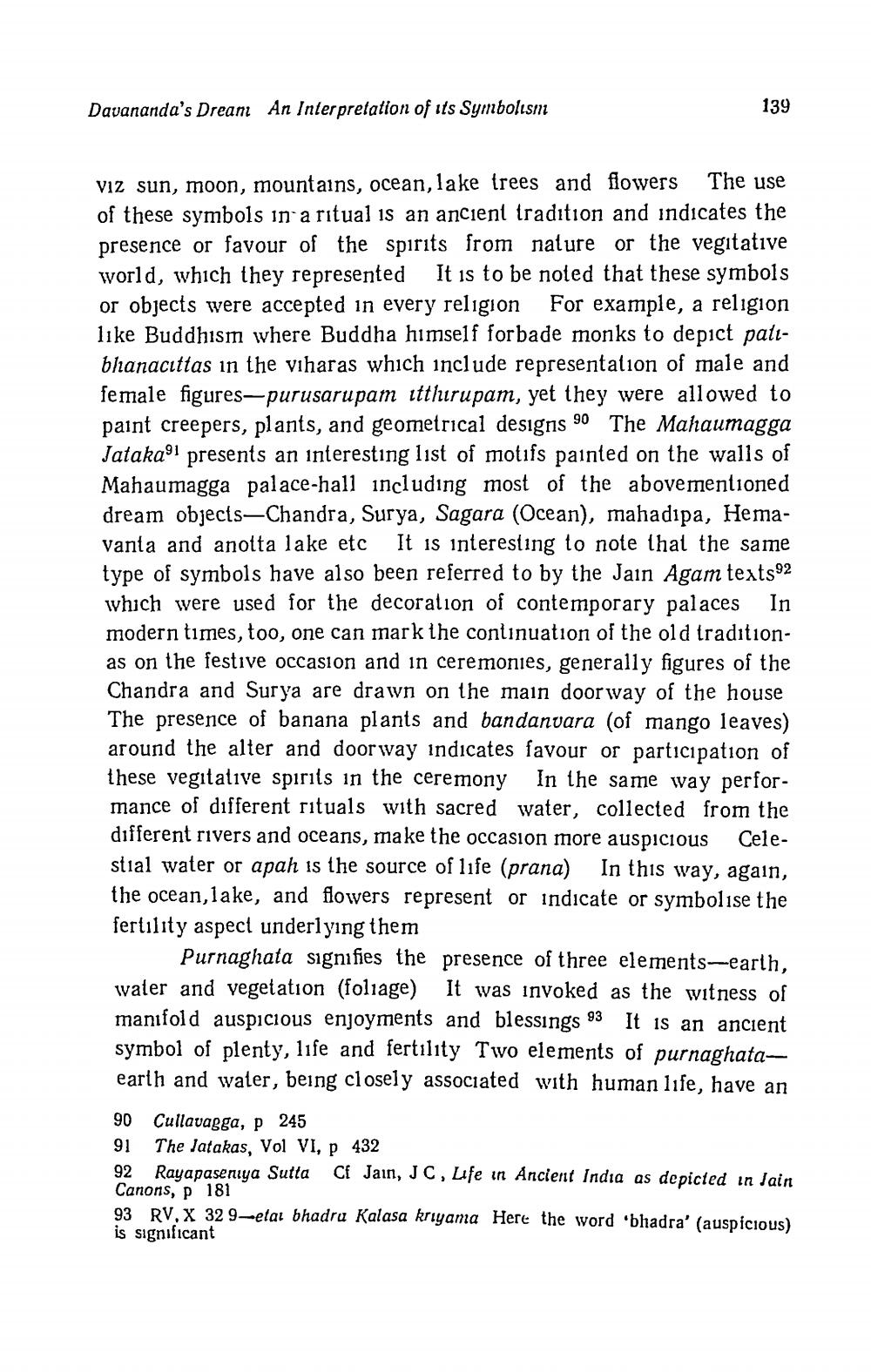________________
Davananda's Dream An Interpretation of its Symbolism
139
The use
Viz sun, moon, mountains, ocean, lake trees and flowers of these symbols in a ritual is an ancient tradition and indicates the presence or favour of the spirits from nature or the vegitative world, which they represented It is to be noted that these symbols or objects were accepted in every religion For example, a religion like Buddhism where Buddha himself forbade monks to depict patibhanacittas in the viharas which include representation of male and female figures-purusarupam itthirupam, yet they were allowed to paint creepers, plants, and geometrical designs 90 The Mahaumagga Jataka91 presents an interesting list of motifs painted on the walls of Mahaumagga palace-hall including most of the abovementioned dream objects-Chandra, Surya, Sagara (Ocean), mahadipa, Hemavanta and anotta lake etc It is interesting to note that the same type of symbols have also been referred to by the Jain Agam texts92 which were used for the decoration of contemporary palaces In modern times, too, one can mark the continuation of the old traditionas on the festive occasion and in ceremonies, generally figures of the Chandra and Surya are drawn on the main doorway of the house The presence of banana plants and bandanvara (of mango leaves) around the alter and door way indicates favour or participation of these vegitative spirits in the ceremony In the same way performance of different rituals with sacred water, collected from the different rivers and oceans, make the occasion more auspicious Celestial water or apah is the source of life (prana) In this way, again, the ocean, lake, and flowers represent or indicate or symbolise the fertility aspect underlying them
Purnaghata signifies the presence of three elements-earth, water and vegetation (foliage) It was invoked as the witness of manifold auspicious enjoyments and blessings 93 It is an ancient symbol of plenty, life and fertility Two elements of purnaghataearth and water, being closely associated with human life, have an
90 Cullavagga, p 245
91 The Jatakas, Vol VI, p 432
92 Rayapaseniya Sutta Cf Jain, JC, Life in Ancient India as depicted in Jain Canons, p 181
93 RV, X 329-etar bhadra Kalasa kriyama Here the word 'bhadra' (auspicious) is significant




